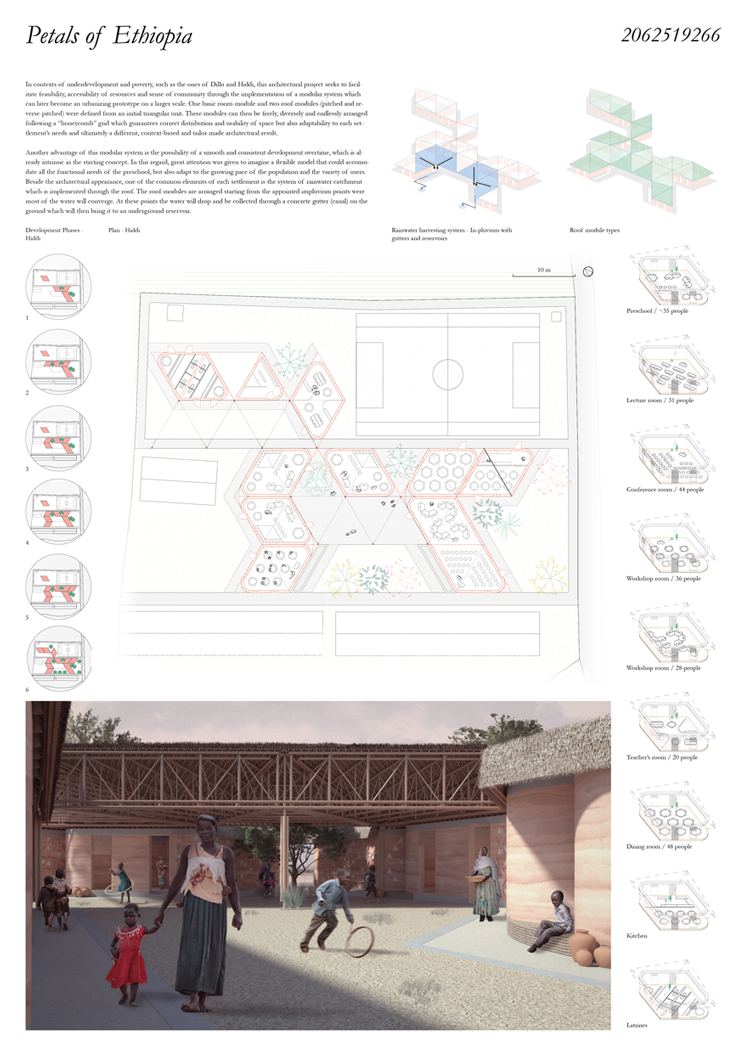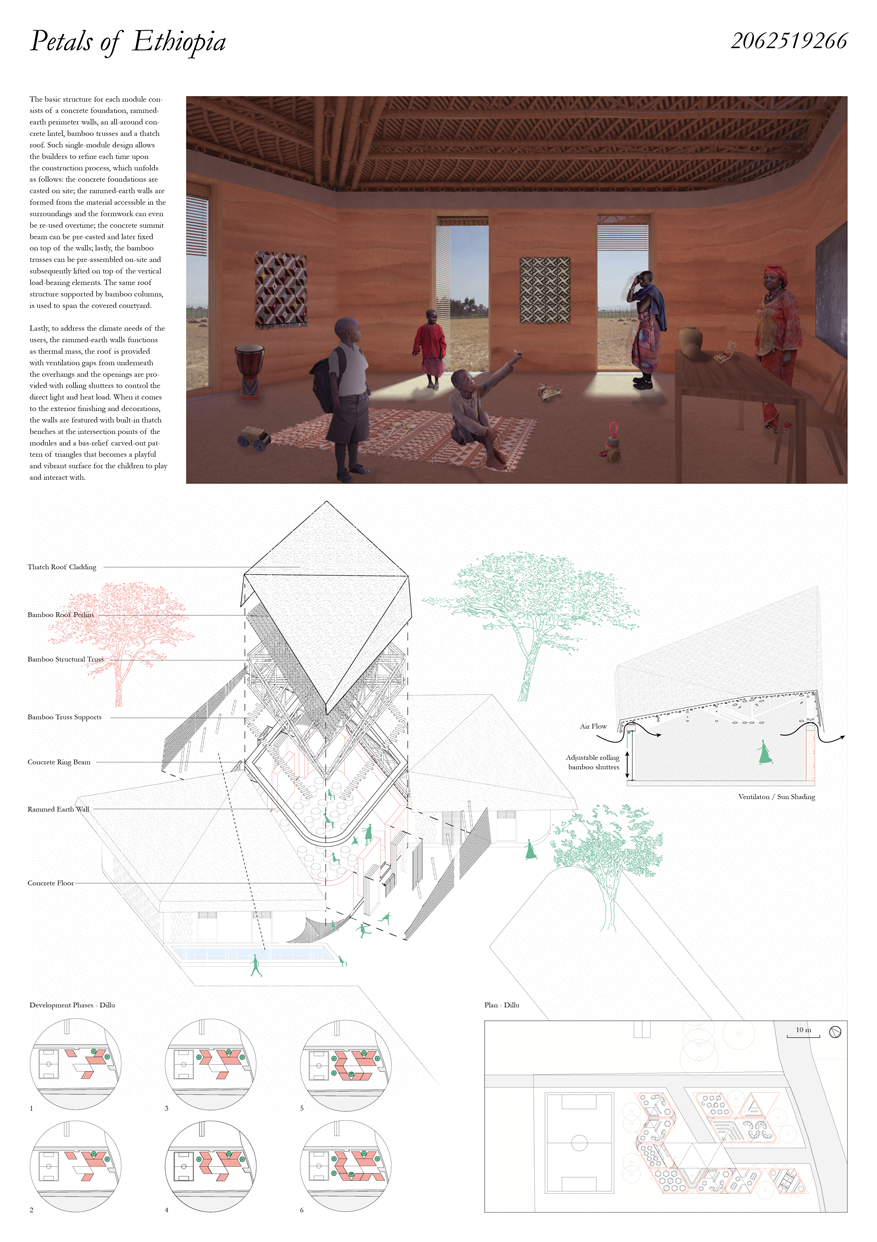| Year: | 2021 |
| Tools: | Rhinoceros, Grasshopper, Autocad, Adobe CS |
| Fields: | Architectural Engineering, Modular Architecture |
| Team: | Martijn Vos, Gijs van Berge Henegouwen, Luca Parlangeli |
With a few teams of the 20XX architecture collective we joined the Archstorming Ethiopia competition for 2 satellite preschools in Ethiopia. The construction of another school by the same organization a decade ago showed that it ensures access to education for children in the area, aiding the entire community. One of the main requirements was that the model that was developed by the participants can be adapted to the different places where the NGO, Abay, wants to build schools.
About the project
Text written for the competition entry – In contexts of underdevelopment and poverty, such as the ones of Dillu and Hiddi, this architectural project seeks to facilitate feasibility, accessibility of resources and sense of community through the implementation of a modular system which can later become an urbanizing prototype on a larger scale. One basic room-module and two roof-modules (pitched and reverse-pitched) were defined from an initial triangular unit. These modules can then be freely, diversely and endlessly arranged following a “honeycomb” grid which guarantees correct distribution and usability of space but also adaptability to each settlement’s needs and ultimately a different, context-based and tailor-made architectural result.
Another advantage of this modular system is the possibility of a smooth and consistent development overtime, which is already intrinsic in the starting concept. In this regard, great attention was given to imagine a flexible model that could accomodate all the functional needs of the preschool, but also adapt to the growing pace of the population and the variety of users. Beside the architectural appearance, one of the common elements of each settlement is the system of rainwater catchment which is implemented through the roof. The roof-modules are arranged starting from the appointed impluvium points were most of the water will converge. At these points the water will drop and be collected through a concrete gutter (canal) on the ground which will then bring it to an underground reservoir.

